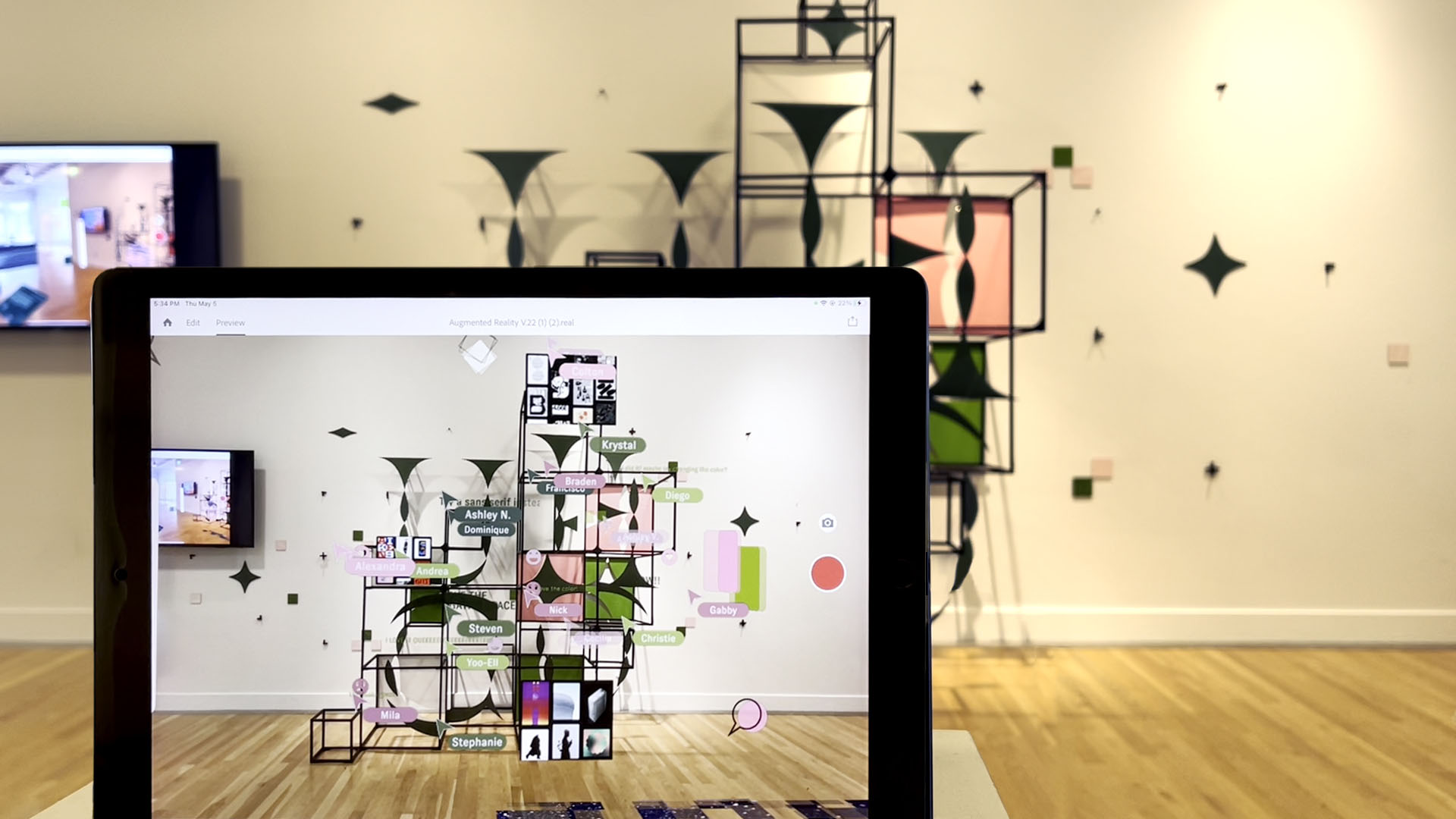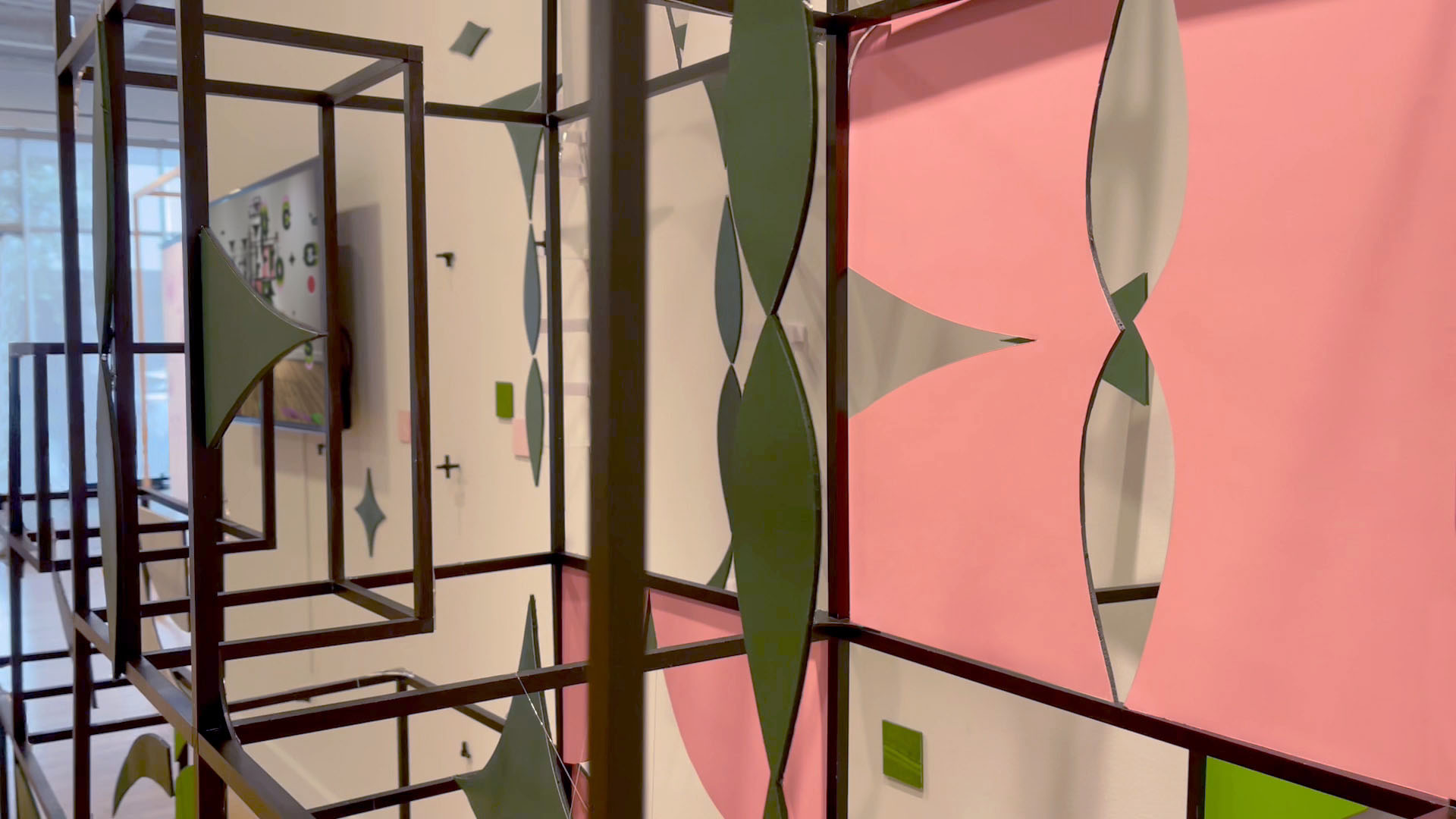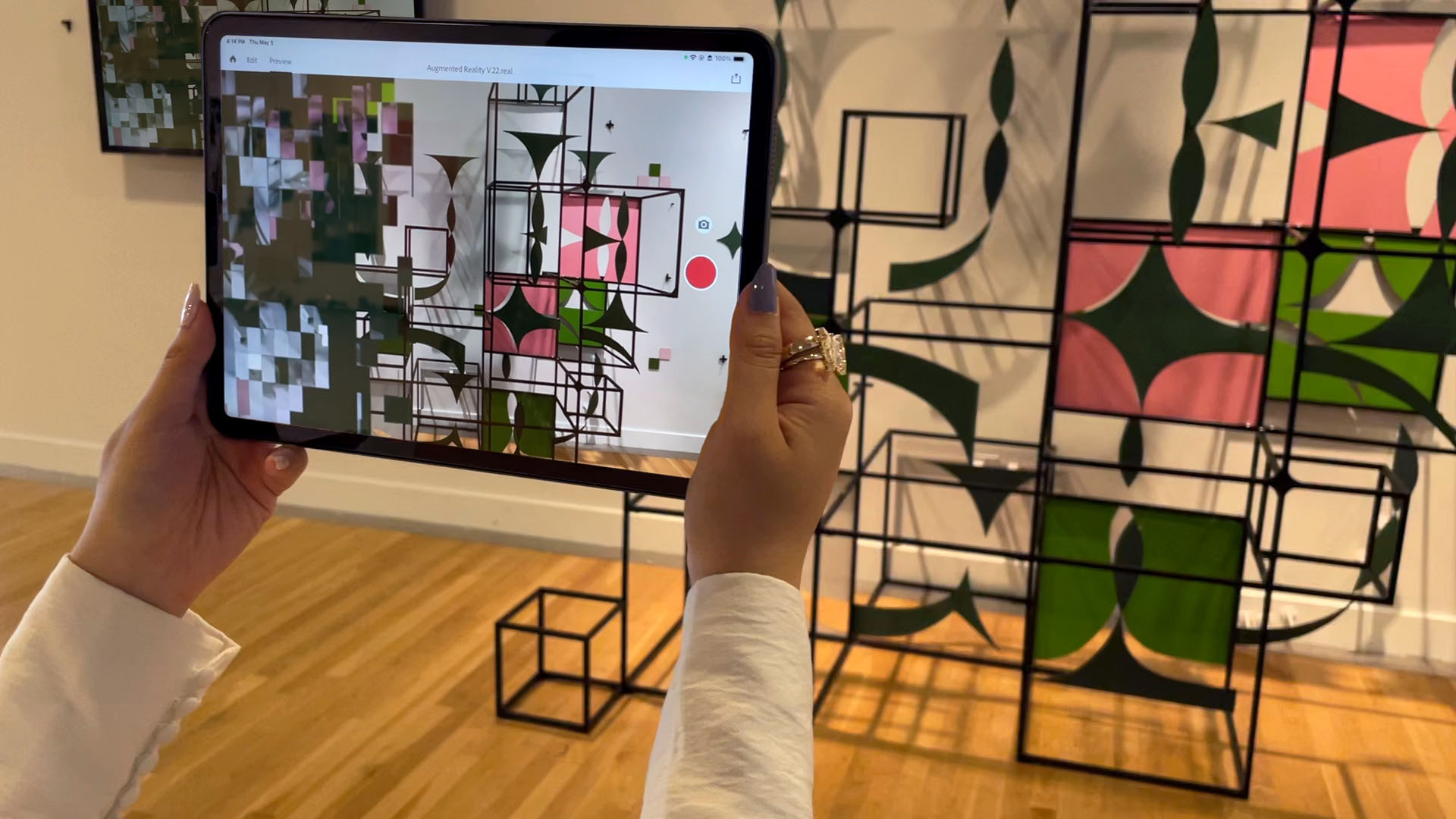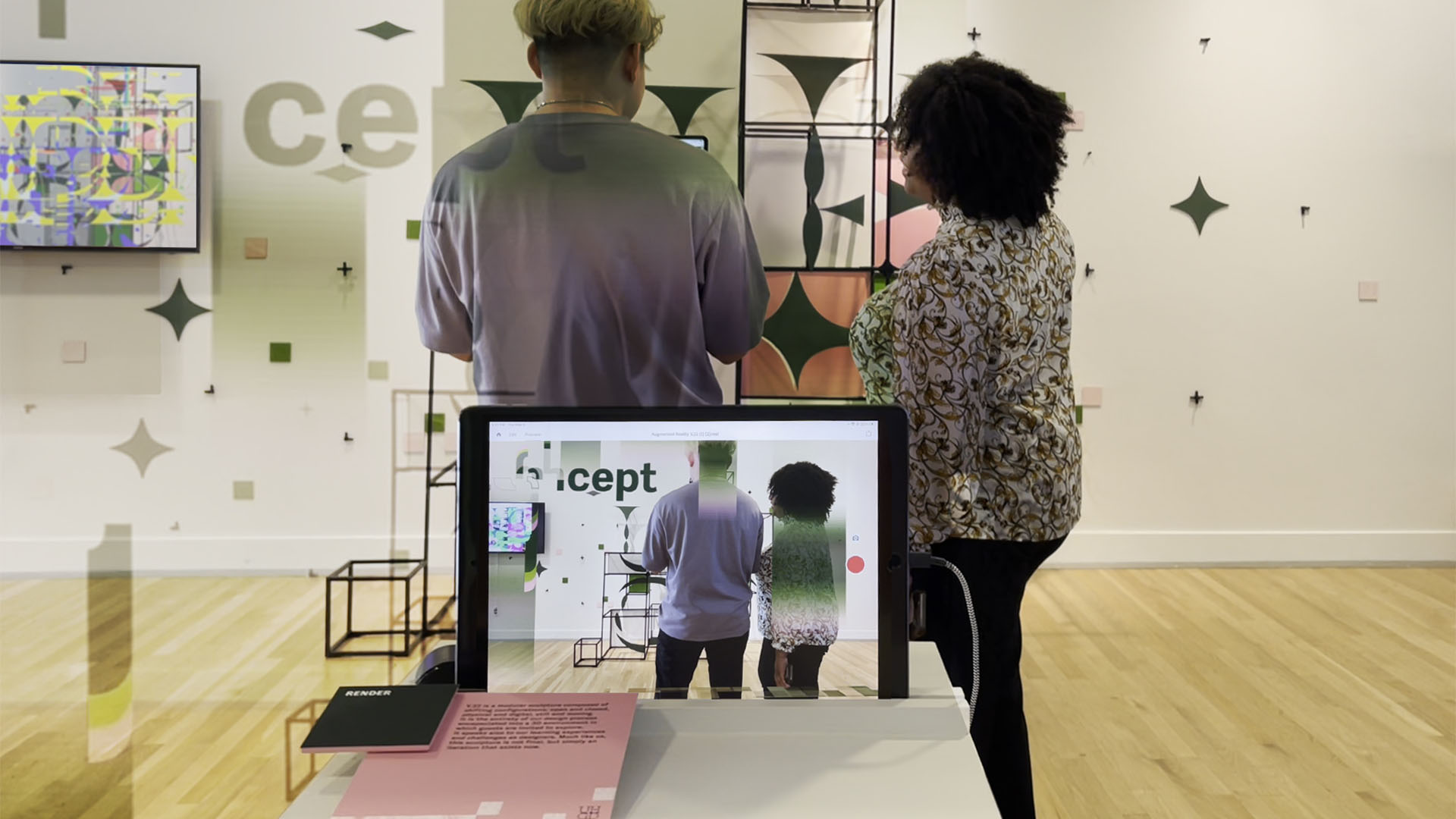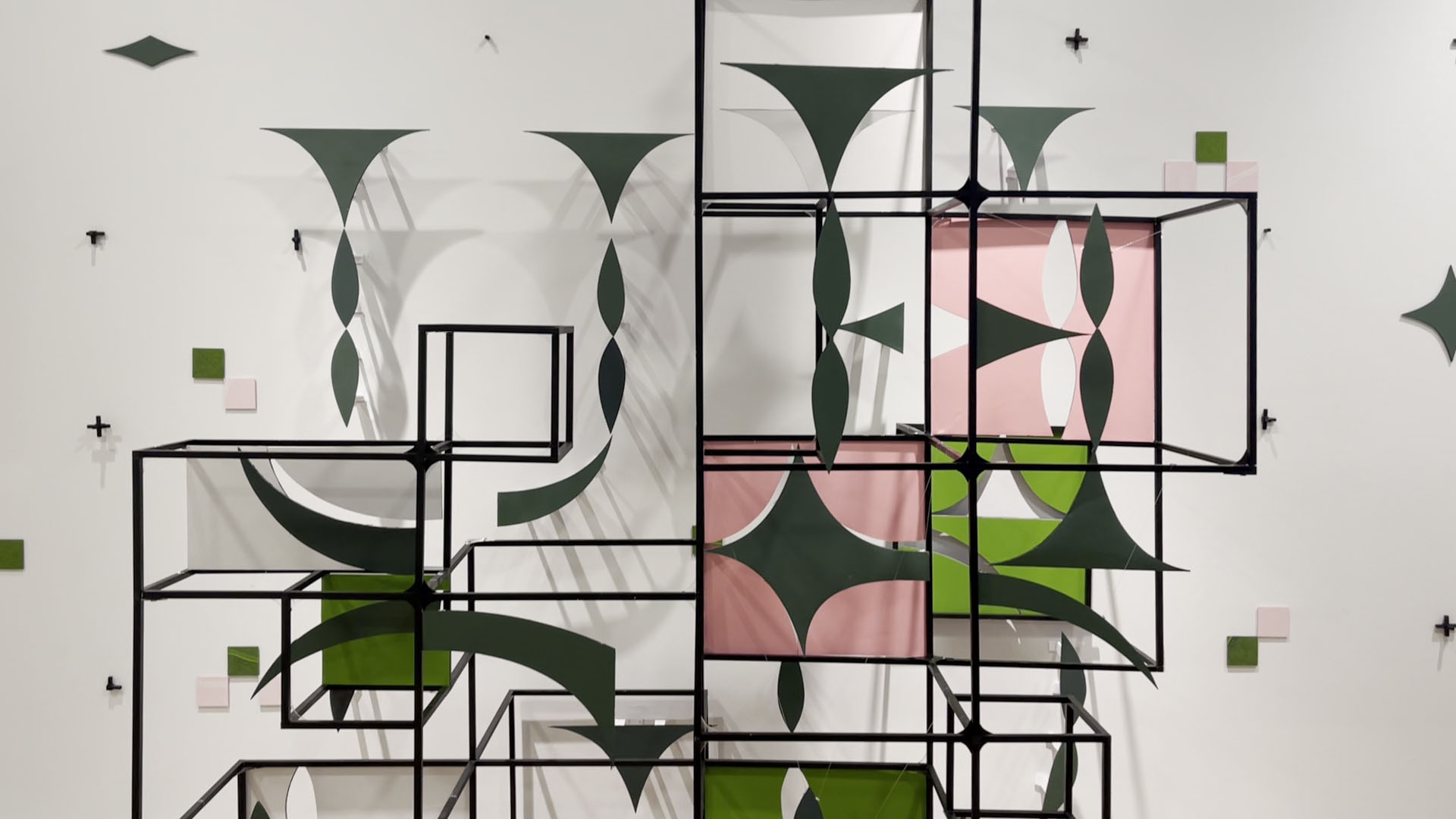v.22 (Version 22)
Employing the exhibit theme RENDER, the University of Houston Graphic Design class of 2022 crafted a placemaking artwork for the exhibit using both tangible materials and augmented reality (AR) projection.
Agency
Kirksey Architecture
Practice Area
Client
Adjunct Professor Adry Suryadi, University of Houston, Graphic Design Program
Industry
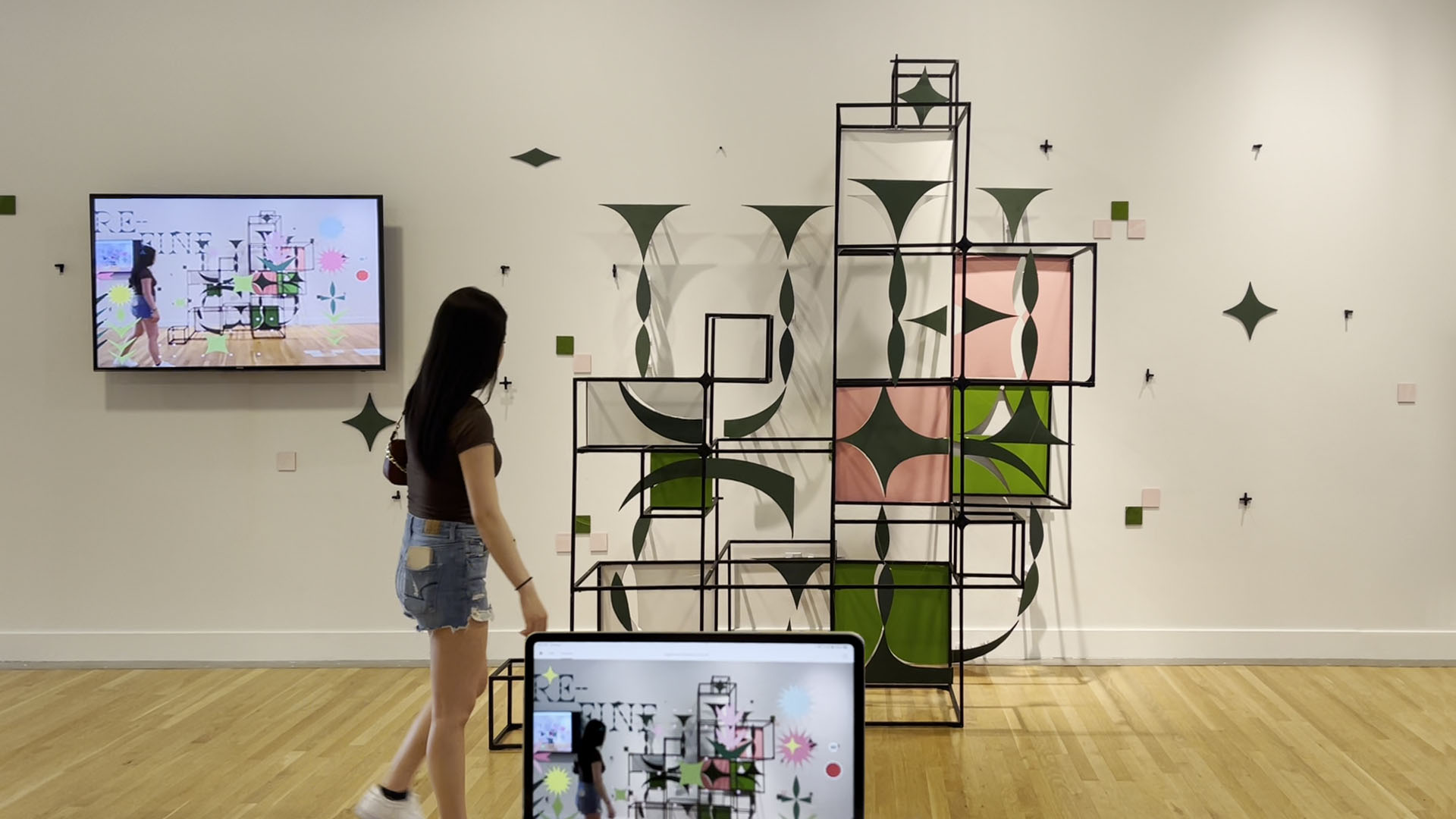
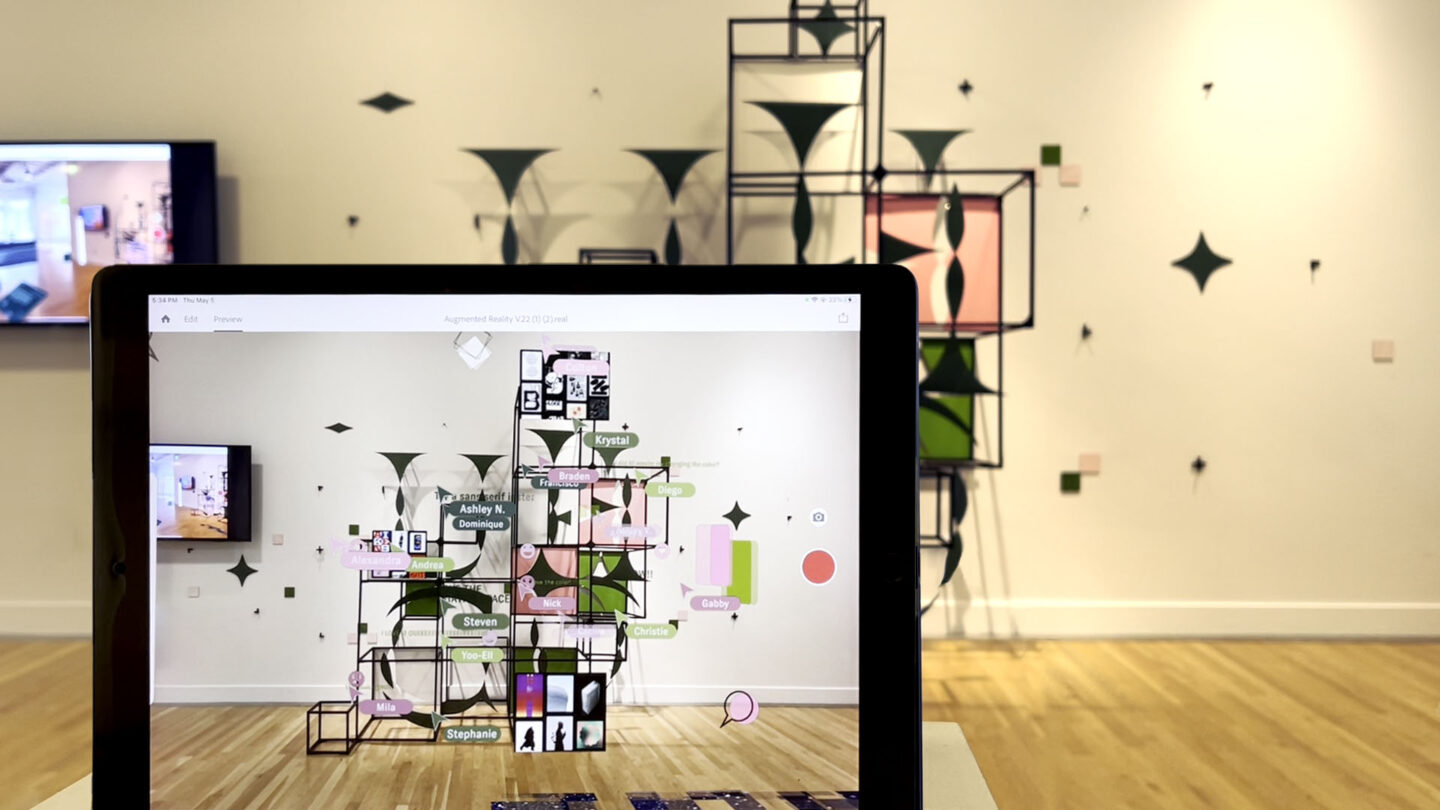
AR graphic appears superimposed on the wireframe structure of a static iPad. A different viewer can use another iPad to move around and have their experience streamed on a TV.
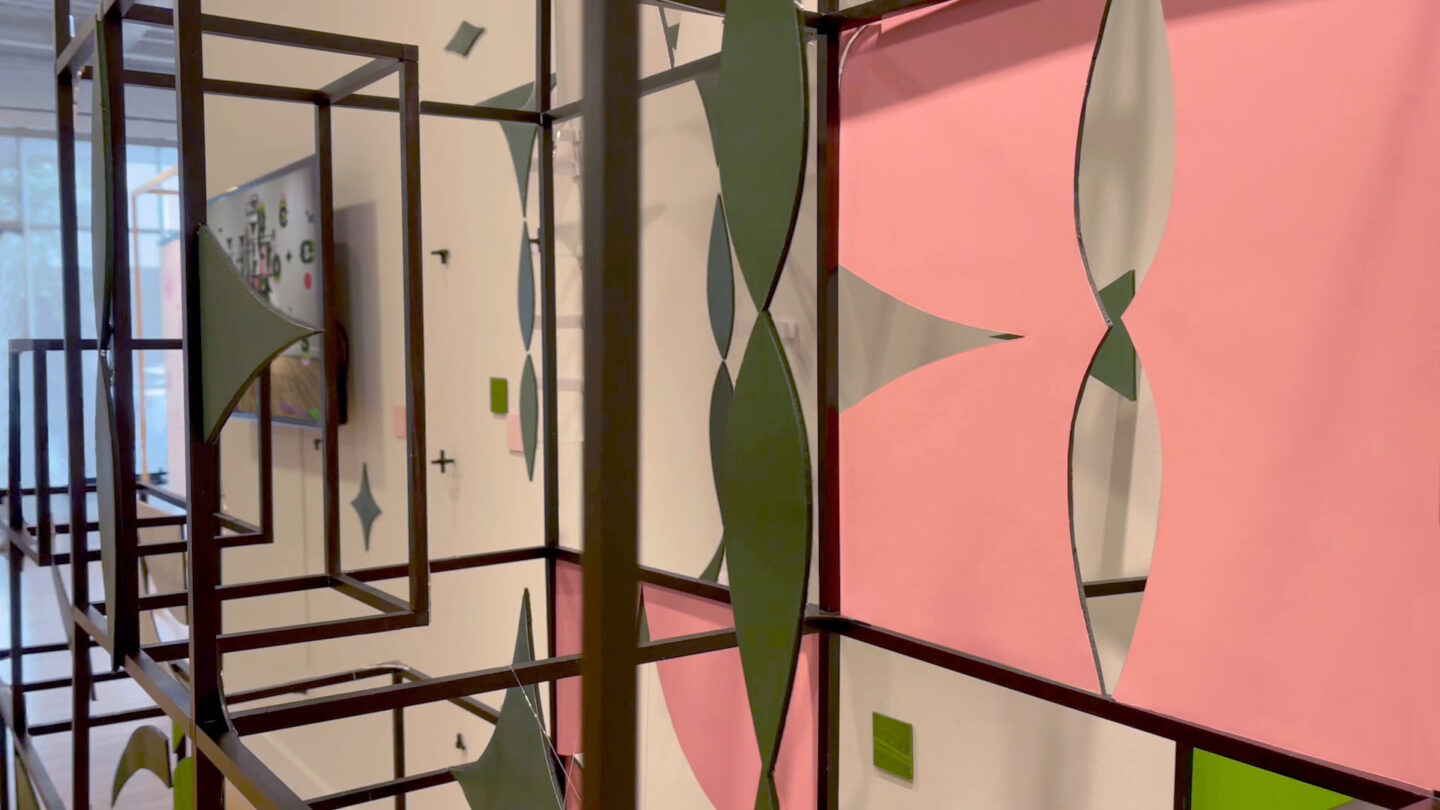
Taking a closer look at the wireframe sculpture and the graphic elements mounted at varied distances, a visual representation of the many perspective
of design.
Project Overview
The experimental process pushed the students outside their comfort zone and challenged them to translate their wild ideas into realistic solutions. This ultimately refined their problem-solving skills, critical thinking, and team collaboration. All aspects of design were taken into consideration, such as motion graphics, placemaking, interactivity, and 3D fabrication. Students were also split into sub-teams according to their individual interests.
This project was crucial in displaying how knowledge of AR is becoming increasingly necessary for graphic designers in order to create and integrate immersive experiences into their projects. While technology is continuously evolving, the design approach and concept of crafting thoughtful user experiences remain unchanged. The software advances now provide more access for designers to experiment with AR technology, as coding is no longer a requirement to bring their visions to life.
Dubbed v.22, this AR sculpture was comprised of various forms: open, closed, physical, digital, still, and moving. These components combined to tell a virtual narrative in the form of a series of collages, showing off the designer’s learning processes and skill sets. Additionally, a diegetic sound was integrated into the piece, providing an immersive experience for the audience.
To symbolize the Graphic Design Block Program, a wireframe block was used to represent the pixels in 3D space. The structure was five feet deep, eight feet high, and eight feet wide, with a 240 sqft of projected interactive area that was 20 feet wide and 12 feet long. Three iPads ran the live AR projection and allowed the audience to explore the 360 degree visuals: two handheld devices to walk around, and one on a podium from 12 feet away so everyone could view the entire sculpture and the people in between, along with the AR projection.
To complete this project, twenty-two designers worked together for nine weeks to overcome the logistics of design and building as well as debug the installation. Every class session involved presentations and discussions of research, along with exploration of the framework and sequence of events needed to make the AR technology work. This included uncovering the maximum layers in 3D space, discovering the optimal distance for projection, anchoring images in the X, Y, Z axis, exporting an ideal file format and size to reduce lag, positioning both physical and digital objects, creating physical key mappings, incorporating motion, sound, and 3D assets into the model, and creating mobile, lightweight sculptures that were substantial in size yet cost effective.

This viewpoint allows us to see how positive and negative space is interacting. 3D printed connectors on the wall have been strategically positioned to act as an AR visual guide.
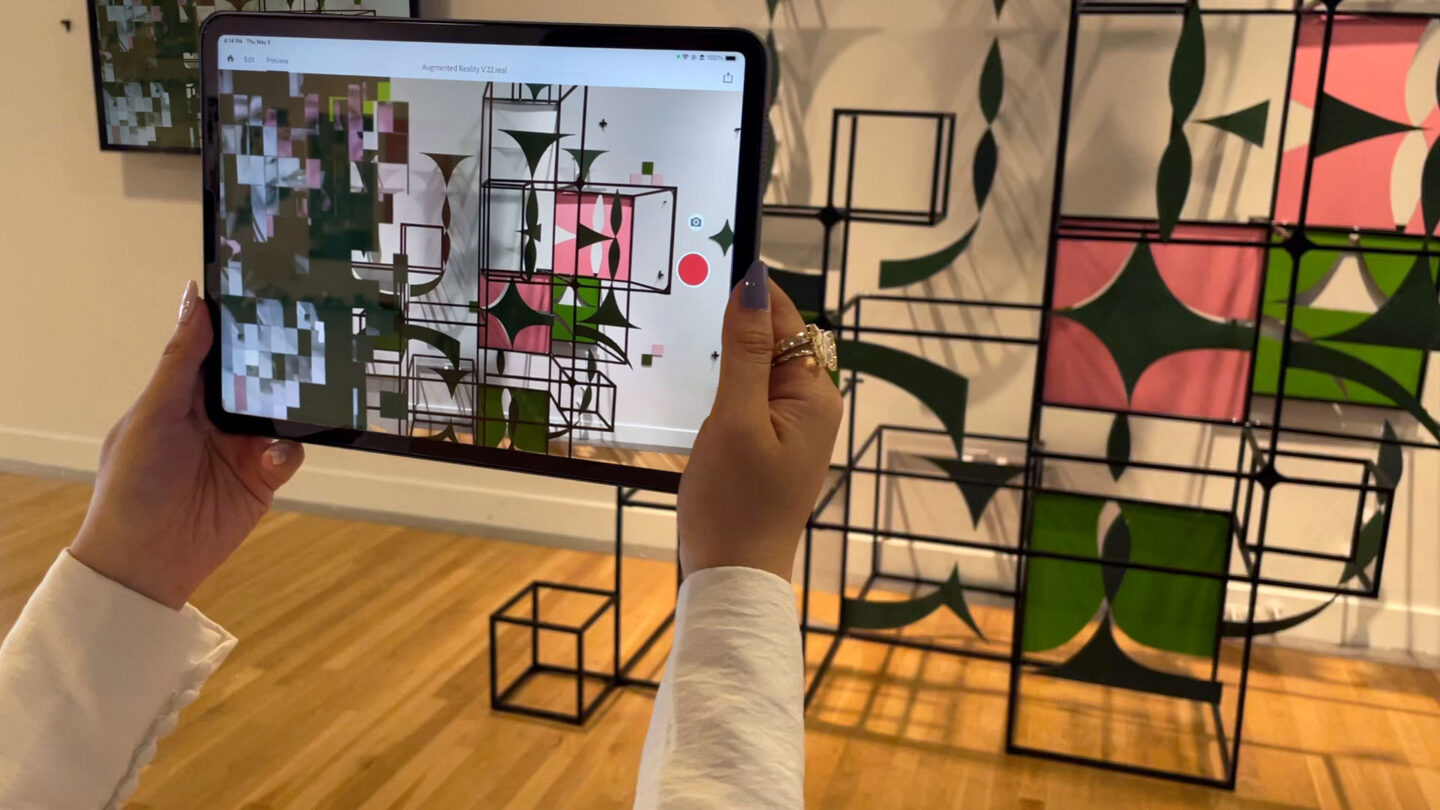
Viewers can observe the complexity of the sculpture up close, with the individual components of motion designs fitting together in perfect symmetry, creating an illusion of rendering in the process.
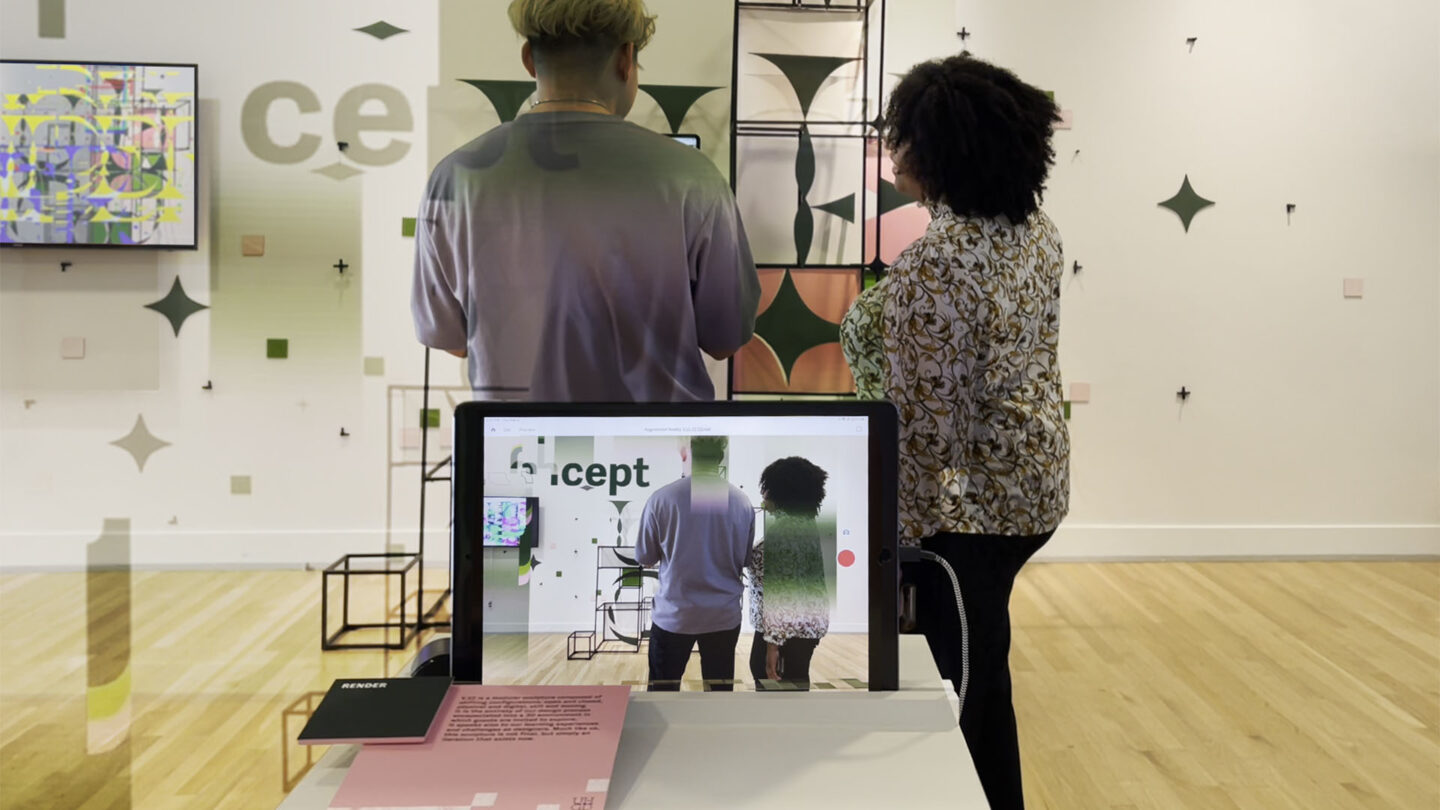
The integration of motion graphics can be noticed as it merges with other subject within frame. As one draws closer to the sculpture, a sound effect is triggered.
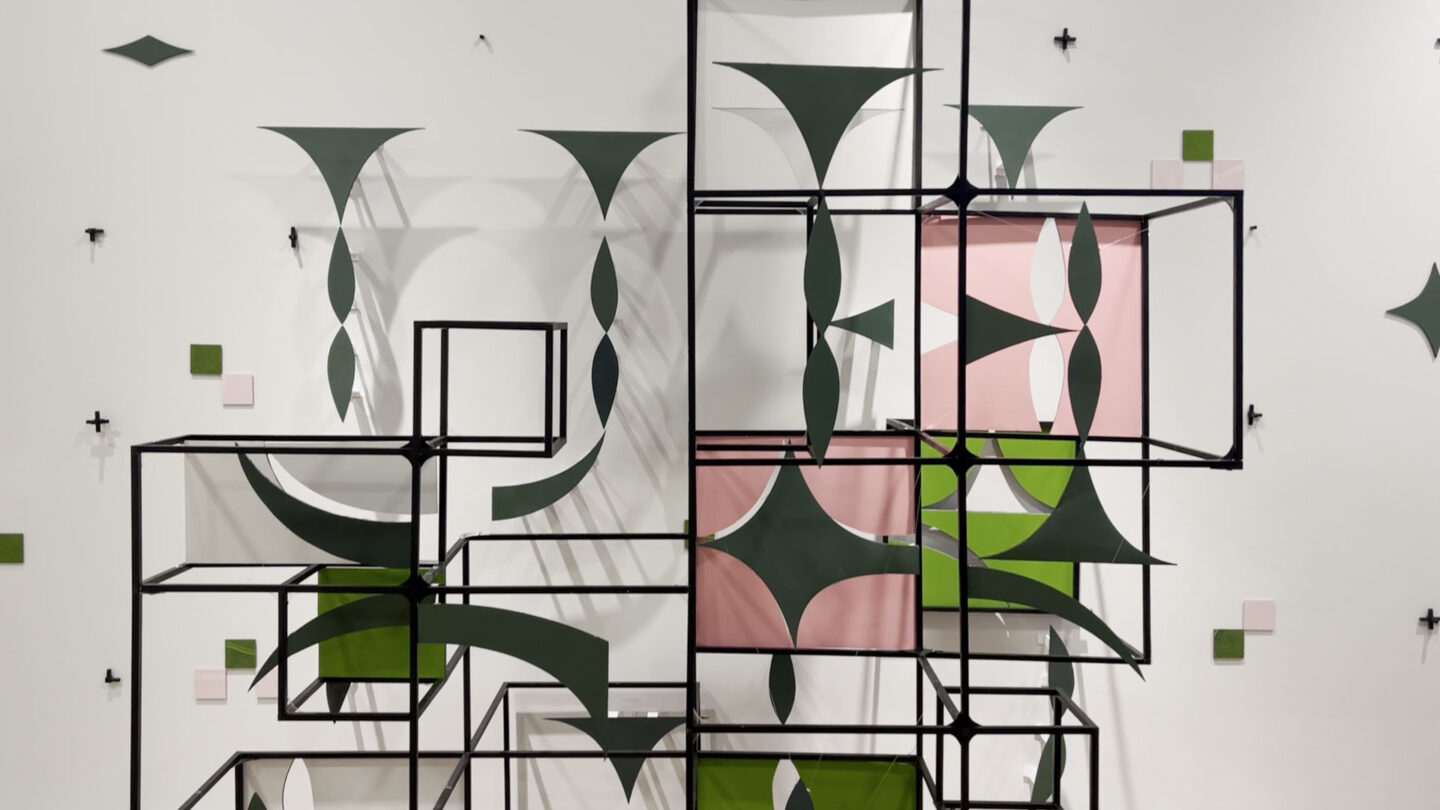
Another take on the modular block system, inspired by the University’s Graphic Design Block program.
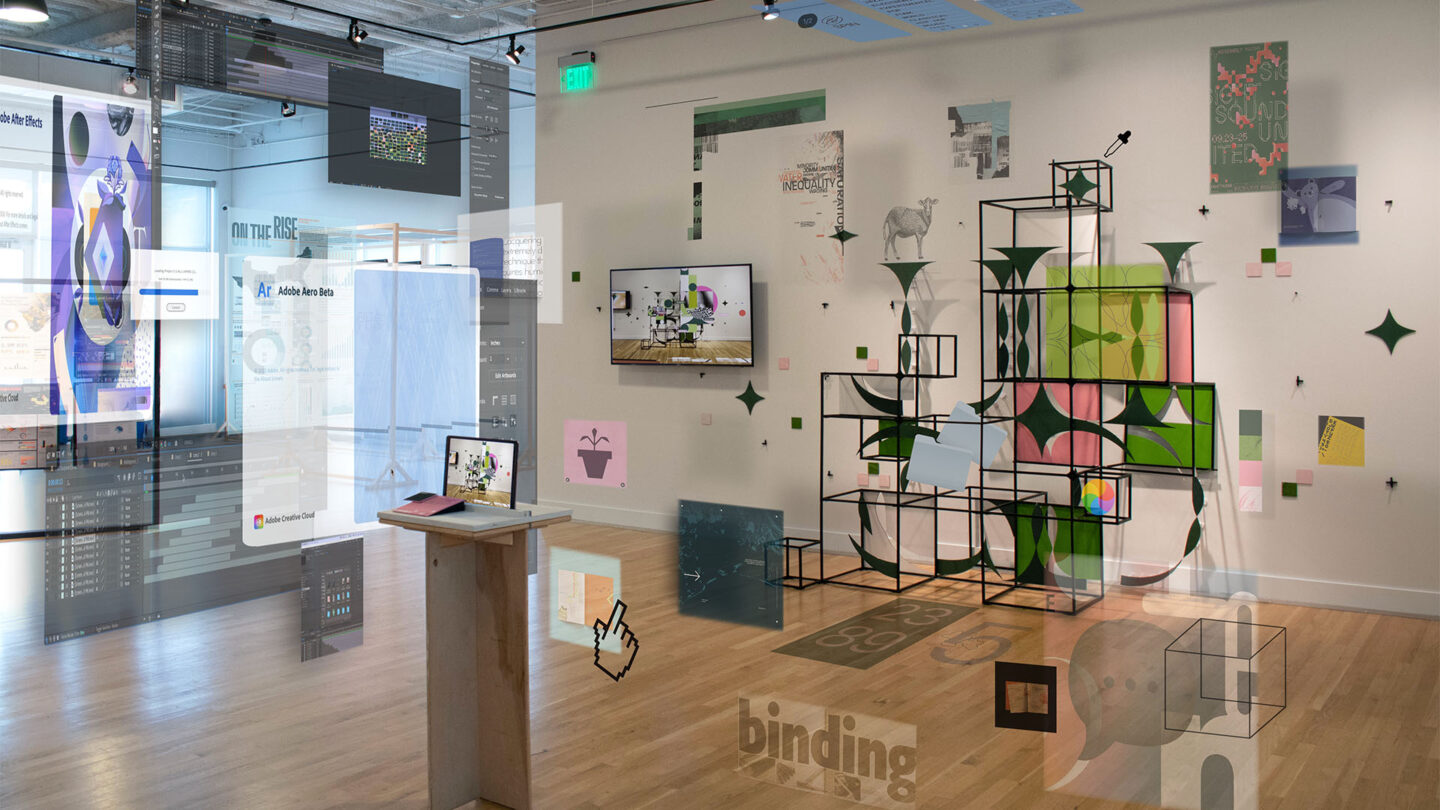
An illustration of the immersive exhibit experience, in which digital contents are broadcasted in all directions of the space. The time for the cyclic movements is set
to 2:22.
Project Details
Design Team
Colton Mckinney, Alexandrea Dziedzic (fabricator), Steven Vo, Christie Le (augmented reality), Diego Martinez, Ashley Villalta (motion designer), Mila Hoang, Krystal Hoang (modeling & prototyping), Rachel Garcia, Andrea Barela, Nick Tallent (print design)
Photo Credits
Steven Vo, Christie Le, Adry Suryadi
Open Date
May 2022
